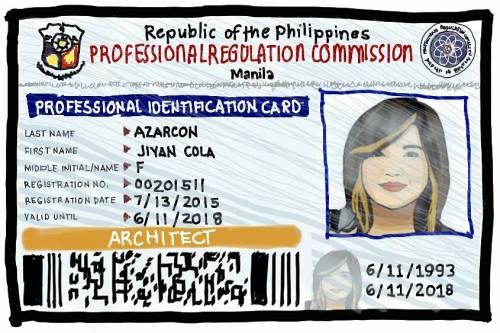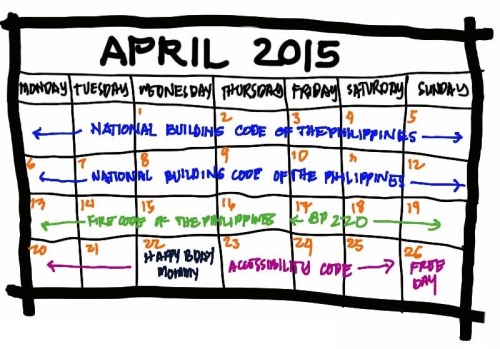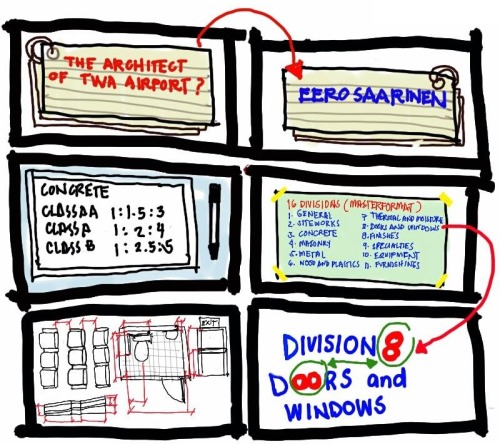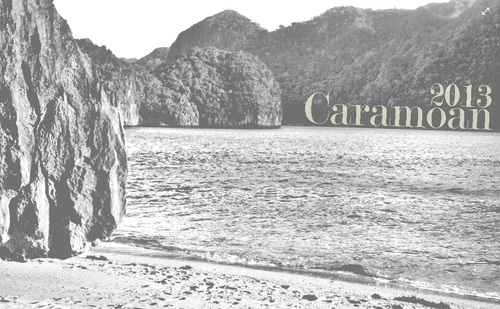
I just recently passed the board exam for Architecture which is formally known as the, ALE (Architecture Licensure Examination) last June 2015. We had two days of examination June 12 2015 (Friday) and June 14 2015 (Sunday). Results were released 5 days after, on June 19, 2015 around 7:30pm. It was a stressful journey but, I regret nothing for everything I did to pull this off was worth it. I stopped working last January to focus on my review. I am blessed to have parents to support me financially while I was reviewing so I don’t have to work to survive every day.
On this post, I would like to share things that have worked for me while I was drowning myself in the deeps of architecture. This is not an full-blast inspirational post, you can find that somewhere else. This is all about review tips that may guide you along your journey. I believe that other than trusting and believing in yourself, you need to work hard first!
Right from the start, I knew exactly that I have to condition myself to set focus on the review. Following are some of the points I considered before I started reviewing.
1. Timeframe2. Retention3. Review Materials and Paraphernalia4. How to Keep Your Sanity
1. TIMEFRAME

Time is the enemy. Every minute is important and for sure you don’t want to waste it.
· SCHEDULE YOUR CALENDAR
I listed everything I had to read (books, notes, handouts) and set an estimated timeframe on my calendar to when I think I would finish it. With this, you will be able to track whether your progress is slow, so then you double the effort and focus you have to exert. The last thing you would want to know is you’ve spent so much time on a specific subject that you don’t have ample time to review the other topics. Another advantage of having a schedule, is you know what subject to focus on after another, in this case you know that there is a finish line, and you can somehow see it. An organized person has an organized mind. We don’t need chaos inside our system. You know your limit and you can adjust your plan according to your pace. Mark dates that serve as your rest days, or important dates attend to some social gatherings. Remember to leave some time allowances for surprise events that may come along the way. If you are working, make sure to plan ahead when you would prefer to take full time in reviewing or whatnot. Lastly, find out important dates regarding the examination, get only from reliable sources to avoid confusions. Get your school requirements and logbook ready at least 3 weeks before the registration deadline to avoid hassle. (Note: Always check if the cedula, IAPOA Certificate, PRC ID, and PTR of the Architect/s who will be signing your logbook are updated)
The aim is to cover all the subjects, to grasp as much information as your brain can. You can do this without stressing yourself. To gain the confidence you need, you must be familiar with everything. Therefore you must start early so you don’t need to cram before the exams. Just imagine compressing 5 years of learning to 6 months of preparation for boards. Most of the items you cram are those easily to slip out from your memory. Read as plenty as you can just until your mind starts to get tired.
2. RETENTION

It’s all about retention. What is the use of reviewing and studying if nothing will remain in your memory? Apparently, there are a lot of terms and concepts that you will encounter while reviewing. Being familiar with a lot terms will be helpful enough in answering the exam. What has worked for me are the ff:
a. Make acronyms out of enumerated items, so you won’t miss out a single item
Examples:1. NALSZThe National Artists for architecture (in order) Now when the exam asks, who is the 3rd National Artist for Architecture, you won’t be lostWhich stands for1. Nakpil, Juan2. Antonio, Pablo3. Locsin, Leandro4. Santos, IP5. Zaragosa, Jose
2. IMAGE OF THE CITY by KEVIN LYNCH
PLEND- (Pathways, landmark, edge, node, district)There are terms that you would let the heavens do the guessing during the exams, like this:Intercolumnation: PSEDAWhich stands for: (term : corresponding distance of each column)Pycnostyle: 1 ½Systyle: 2Eustyle: 2 ¼Diastyle: 3Araeostyle: 4
In this case, I only familiarize with the values (1 ½, 2, etc) in order and PSEDA acronym. So when the question is about intercolumnation, you will have an order of which value corresponds to what term, whether you know the exact word/s or spelling.
These are just some of the acronyms I made, I won’t share it for now, because it’s better to make your own touch on it so you would remember it.
b. Make a story out of the enumeration. Remember the story and you will not get lost. I made weird ones, but it is okay, no one would know about it. No one will judge you. You can also make a checkpoint. Simplest example is the alphabet, like number 10, you know it’s J. You can do this with SPP Documents Articles, 16 Divisions of Master Format
c. When you are to memorize names and some significant works they did, go make a story out of it, and try to associate it with each other. Connect their names to their works. Share it to others, all the analogies you can think of, ‘til it annoys you. Trust me, you will not forget it.
Here are some of what my friends and I came up:1. Willian Hoyt- Sector ModelHoyt is to HotHot is to Sexy; therefore, SectorHot is to Model2. Concentric Model- Ernest BurgessConcentric: Round; Round: Burger3. Agri-Fina Buildings. Two buildings on same locations designed by Antonio ToledoTwoledoBe creative! Funnier the better, it’s one way of enjoying while memorizing!
d. Play with the words. There are items that is confusing most especially if the terms have counterparts. Now create terms that will help you identify which terms is associated to which term
ExampleOn Utilities: ElectricalRectifier:InverterRectifier- AC to DCInverter- DC to ACChange ec to ac on RECTIFIER, RACTIFIER = R-AC = AC to DC
Make a mark on one term and then you will know the other term belongs to another.
e. Post-its, manila paper on walls. This technique has also helped me somehow to be familiarized with some acronyms, and laws/short titles of building laws. But I was not always inside the room where I posted my paper, I study outside our house, so it became useless for me later on. You are trained to be an architect, you know the effective points on where to post them! Remember to only just write stuff you know is very important. Don’t waste your resources.
f. Flashcards/index cards. If you’re always on-the-go, or still working while reviewing, or very rich in social life, you might need flash cards. Best time to make flash cards, is before you start attending your review (for those who will be taking review classes). Just like the post-it, you only write what you think is important. This is very handy, I tell you. You can also ask your friends to do the other subjects so you can trade your flashcards.
g. White board. It is also helpful to always bring with you a small whiteboard so that you can memorize terms by repeatedly writing it down. Also, in order to memorize dimensions, you can also practice drawing/sketching how it looks like in a plan over and over to master it. Practice visual memory.
h. Save photos/pdf on your phone. So when you’re out and bored, you can check them up. ARKIQUIZ Lite is also a good app for reviewing. It’s available for Android, I am not sure if it’s already available for IOS. It’s still on beta, you can always check/confirm answers for verifications.
i. Find a review group. Some of the items I encountered last board examinations, are just some of the items my friends and I fond of talking about. We would always learn something new from each other everytime.
j. Practice. Some say that you should train yourself answering questions/mock tests so you’ll get used to the format of the exam. Review centers say that there are certain questions that always show up on the exams, so better take note on those items. Though I only practiced two days before exam and it was still helpful.
3. REVIEW MATERIALS AND PARAPHERNALIA

Get a trusty reviewer. If you cannot afford, make sure to borrow copies of it. Trust me, it’s a good investment. The handouts I got from college are also useful for me. READ AS MUCH AS YOU CAN! If you don’t feel like buying the handouts, I think these books are good enough:
a. A Visual Dictionary of Architecture by Francis D.K. Ching
(There’s available pdf copy from the internet, and it’s for free) Everything is amazingly written in this book. It is advisable to read this from cover to cover. Others say that mastering this is enough to pass the exam.
b. Dictionary of Architecture and Construction by Cyril M. Harris
This is somewhat similar to D.K. Ching’s but this is more of an organized dictionary time with lesser drawings. There’s also available pdf copy from the internet. You just have to find the complete copy. For free.) It is better to always carry a copy of this book wherever you go and whenever you study. Do not let go of the terms you encounter without knowing its meaning.
c. Max Fajardo Books. These books are very easy to understand since the approach is for students. You will learn the basic and the core of each subject. I recommend that you read this instead IF you don’t feel like going through your handouts (if you have)
o Simplified Methods on Building Constructiono Electrical Layout and Estimateo Plumbing Design and Estimateo Simplified Construction Estimate (optional)o Planning and Designers Handbook (optional, but can be useful in actual practice)
d. Fire Code of the Philippines, SPP Documents, National Building Code of the Philippines, Accessibility Code of the Philippines
I believe it’s still up to the person what makes him/her comfortable while reviewing. As for me, I see to it that right from the start that I would be using my favourite pens (in different colors), complete color of highlighters, and a big nice notebook. Don’t deprive yourself! Support yourself by having the little things that can make you enjoy reviewing. There are times that I wasted 6 hours intended for review just because I ran out of jetstick. I am that OC. I thought I was the only one whose world ends because of lack of supply, but I found out that my friend experienced same thing. Lesson learned, never get out of stock! National Bookstore was my favourite shopping place.
Lastly, find a good playlist. I have been experimental with choice of music I play during my review. Old classic songs during afternoon- Hall and Oates, Etta James, Nat King Cole kind of music. At night I reviewed with Imogen Heap or Ingrid Michaelson discography.
4. HOW TO KEEP YOUR SANITY

First of all, do not torture yourself. Have a life while reviewing. Schedule a rest day after a stressful week. If you’re religious, you never want to miss a Sunday church and make the review an excuse for not attending, build a stronger faith, let your Lord be the source of your strength. Always give time for your family, especially on special events, or if you’re residing far for them, make sure to get in touch with them. Let them be your support group. If you are living with toxic people, make sure to find another individuals that will counter the negativity. This will help you be inspired and focus. Talking to people about something aside from architecture will help your mind relaxed and your system replenished. Exhaustion is the enemy.
As I said earlier, do not deprive yourself. Go watch a movie once in a while, those films that make and will make you happy. Eat whatever you want, eat whatever makes you happy and satisfy your senses. You need to fight stress, always remember that. Vegetables and fruits can help you be strong and improve your memory, just eat it if you want to. You don’t have to force yourself to eat something you don’t want. Please yourself, satisfy and condition your body. Others release stress through exercise, it is also important to maintain a healthy lifestyle while reviewing. That is if you have time. I have researched before that exercising makes your body alive and active, making your brain function better. If you are too lazy to exercise, then have soothing massage so that negative energy will be taken out from your body. If you don’t have budget for massage, a warm hug from a person carrying positive energy will do. Receive hugs, give hugs. Everything should be in your control. Whose fight is this again? Yours. You are going to do this is in your own ways, so set your own standards and rules.
Bottomline, a happy person is an inspired person. When you are inspired, you become the best version of yourself. Find an inspiration and be an inspiration.
TGBTG
disclaimer: this post is purely based from my personal thoughts and experiences. Originally posted at http://xdk.tumblr.com/







































